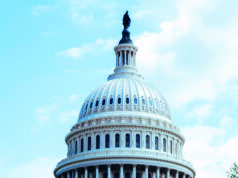 With the congressional “busy season” upon us, the SVS is gearing up for big tasks ahead on the legislative and regulatory fronts. Having stepped into the role of chair of the SVS Advocacy Council this past June, I have to start by highlighting the generosity of our members and the service of surgeon-volunteers who have provided an incredibly strong foundation to build on for the work that lies ahead.
With the congressional “busy season” upon us, the SVS is gearing up for big tasks ahead on the legislative and regulatory fronts. Having stepped into the role of chair of the SVS Advocacy Council this past June, I have to start by highlighting the generosity of our members and the service of surgeon-volunteers who have provided an incredibly strong foundation to build on for the work that lies ahead.
Mark Mattos, MD, and Peter Connolly, MD, led our political advocacy efforts (via the SVS Political Action Committee [PAC] Steering Committee) to achieve a new fundraising record during the last election cycle. This is due to all the donors who have provided invaluable resources to ensure that vascular surgery’s voice is heard on all of the matters important to our members. Already, incoming PAC Chair Yazan Duwayri, MD, is working with the advocacy staff to deploy these funds for maximum impact, including combining forces across specialties where there is common cause. In the upcoming year, we will build on the excellent grassroots efforts of the past year in establishing our “grass-tops” reach 535 program and supporting these volunteers in developing lasting relationships with members of Congress.
Some great opportunities are also on the horizon as Congress starts to ask long-overdue questions. A recent “Request for Information” issued in September by the House Ways and Means Committee notes, “Patients across America are facing increasing healthcare facility closures, travel distances and wait times, driven by a shrinking healthcare workforce, healthcare consolidation and patchwork financing models. This access challenge is uniquely difficult for patients and families living in rural and underserved areas in America.” See the request at vascular.org/RuralHealthCareRFI.
This is preaching to the choir—who knows these challenges better than vascular surgeons and patients? The committee “is seeking broad stakeholder input … with an emphasis on solutions to reshape our nation’s healthcare system and bring new access to care in rural and underserved areas.” We are working to answer that, building on the work of the Population Health Task Force with the establishment of an SVS Health Policy Research Consortium to marshal what our researchers have learned about vascular deserts and access challenges in both rural and urban areas, and to enlist our own best minds to fill gaps in the data needed for the strongest, best-informed advocacy.
As the conversation about reform moves forward, from sustainable funding to more efficient and humane delivery, the SVS will also be working to build alliances to help physicians and patients speak with the single voice needed to rise above the cacophony of interested parties. This holds true for reform at the congressional level and certainly for the upcoming task at the Relative Values Scale (RVS) Update Committee (RUC) of examining how lower-extremity interventions are valued—one in which SVS members can appreciate the foundation of expertise and credibility laid by leaders like Robert Zwolak, MD, Sean Roddy, MD, and Matthew Sideman, MD, and carried forward by Sunita Srivastava, MD, and David Han, MD, on the SVS Coding Committee.
And last, but not least, advocacy looks forward to hearing from SVS members about how we can help you where you are and about your interests and priorities. For instance, we hear from surgeons across the country that prior authorization practices and denials are becoming more onerous, seemingly by the day. The SVS has always worked to analyze and respond to these trends and to work hand-in-hand with members needing support in payer relations. The Society is exploring avenues to most effectively combat barriers to timely, high-quality care. Visit vascular.org/AdvocacyQuestion, or contact [email protected].
Margaret C. Tracci is chair of the SVS Advocacy Council.












